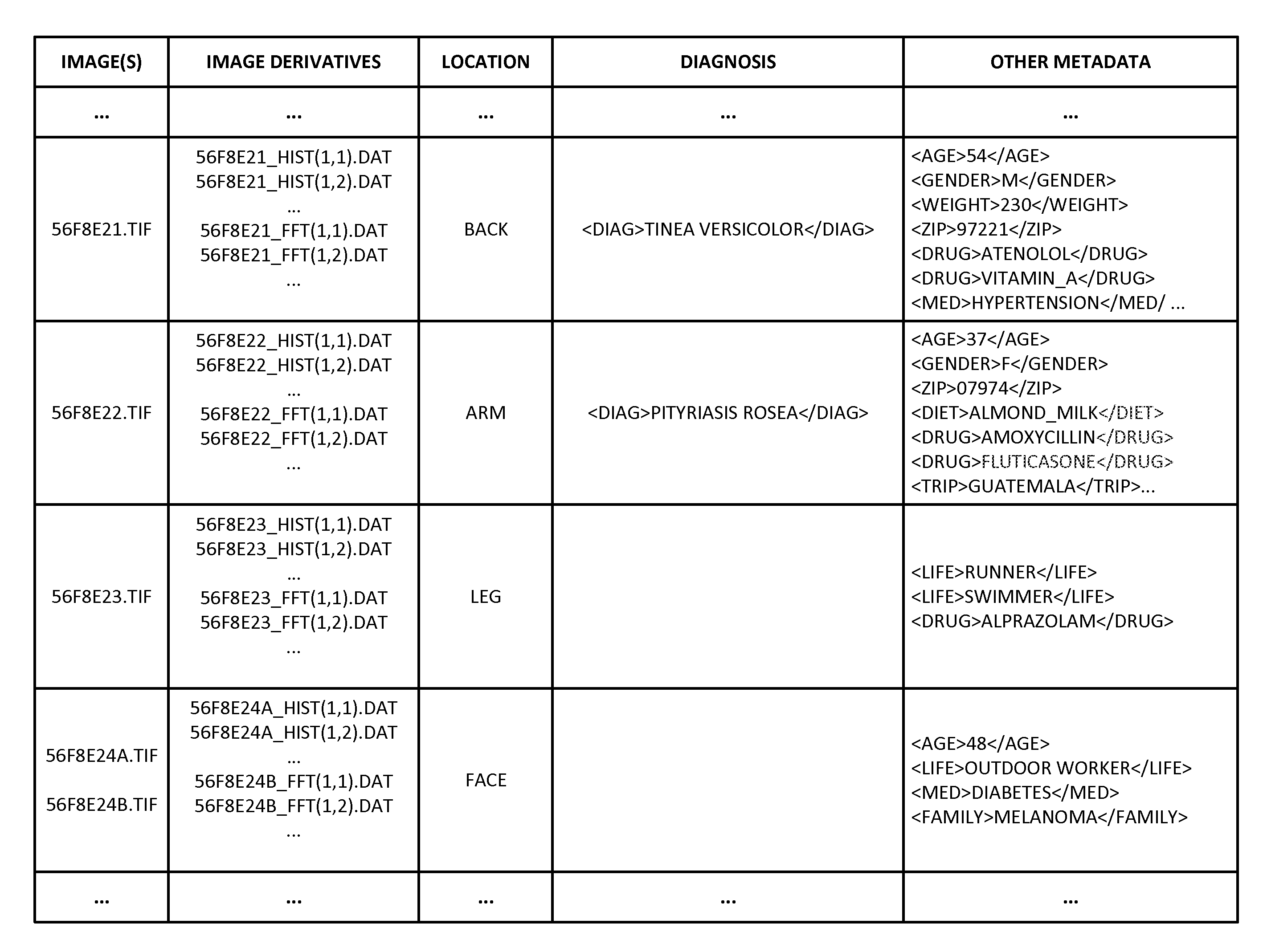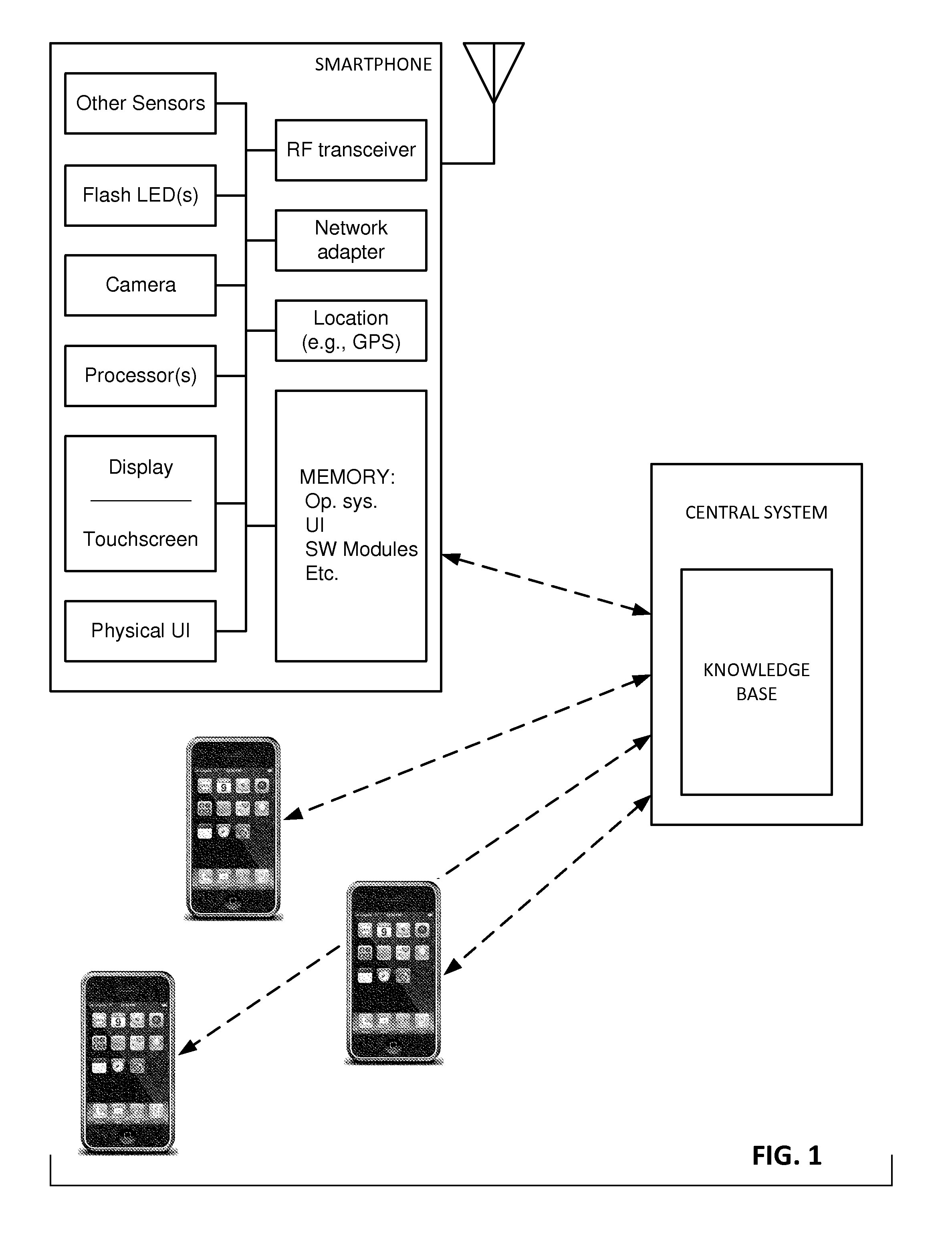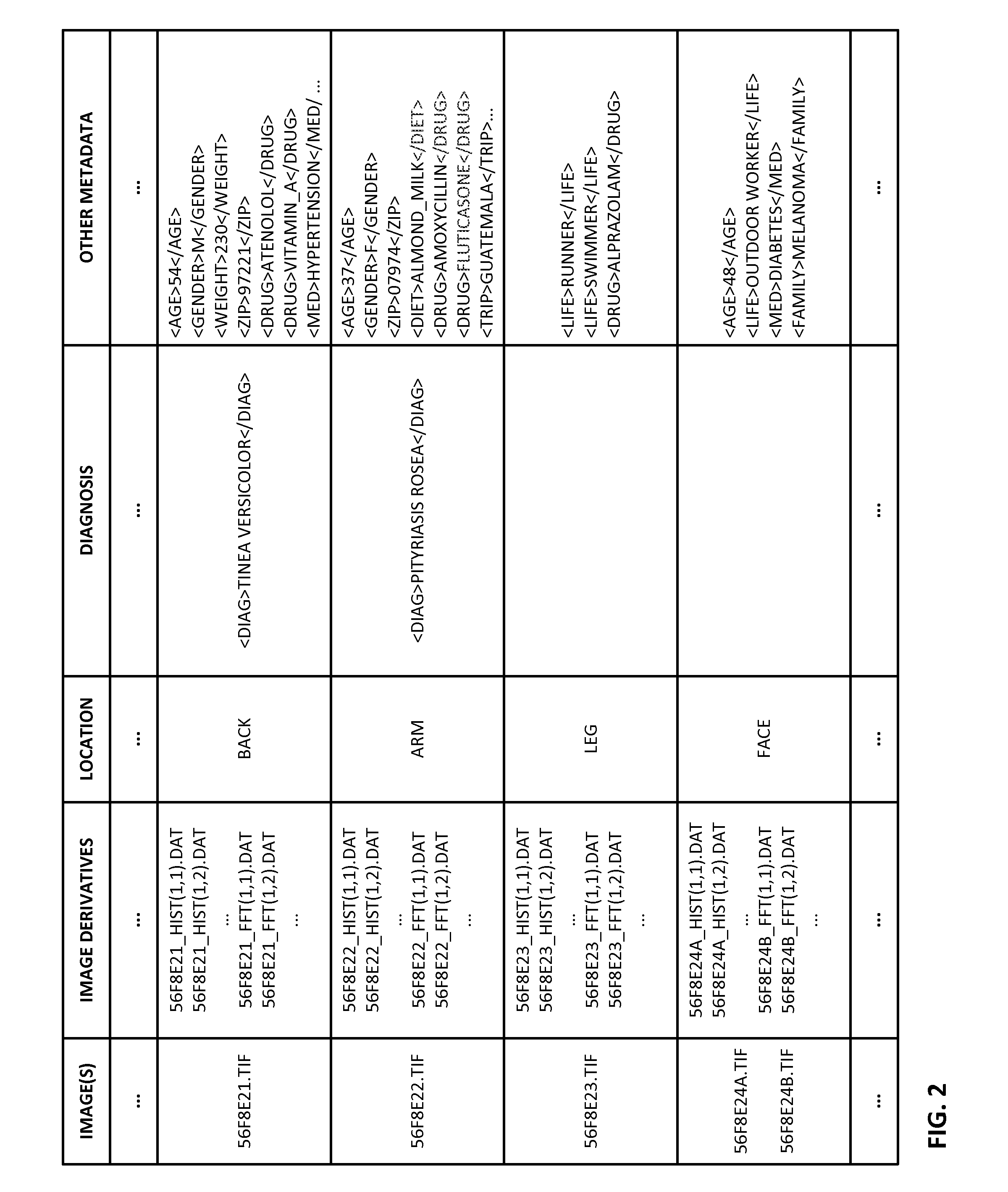Methods and arrangements for identifying dermatological diagnoses with clinically negligible probabilties
a dermatological diagnosis and probability-based technology, applied in the field of methods and arrangements for identifying dermatological diagnoses with clinically negligible probabilities, can solve the problems of difficult for people to differentiate the effects of normal aging from disease, high worry and unnecessary doctor visits, and high difficulty in identifying the effect of normal aging and diseas
- Summary
- Abstract
- Description
- Claims
- Application Information
AI Technical Summary
Benefits of technology
Problems solved by technology
Method used
Image
Examples
Embodiment Construction
[0025]FIG. 1 shows a hardware overview of one embodiment employing principles of the present technology. Included are one or more user terminals (e.g., smartphones), and a central system.
[0026]As is familiar, each smartphone includes various functional modules—shown in rectangles. These include one or more processors, a memory, a camera, and a flash. These latter two elements are controlled by the processor in accordance with operating system software and application software stored in the memory.
[0027]The central system similarly includes one or more processors, a memory, and other conventional components. Particularly shown in FIG. 1 is a knowledge base—a database data structure that facilitates storage and retrieval of data used in the present methods.
[0028]One aspect of the present technology includes the central system receiving first imagery depicting a part of a human body that evidences a symptom of a pathological condition (e.g., skin rash or bumps). This imagery (and its i...
PUM
 Login to View More
Login to View More Abstract
Description
Claims
Application Information
 Login to View More
Login to View More - R&D
- Intellectual Property
- Life Sciences
- Materials
- Tech Scout
- Unparalleled Data Quality
- Higher Quality Content
- 60% Fewer Hallucinations
Browse by: Latest US Patents, China's latest patents, Technical Efficacy Thesaurus, Application Domain, Technology Topic, Popular Technical Reports.
© 2025 PatSnap. All rights reserved.Legal|Privacy policy|Modern Slavery Act Transparency Statement|Sitemap|About US| Contact US: help@patsnap.com



